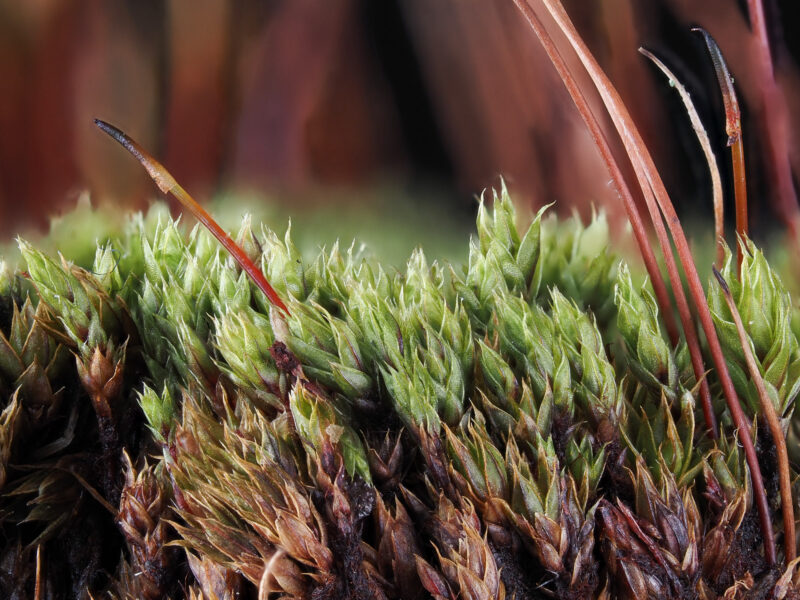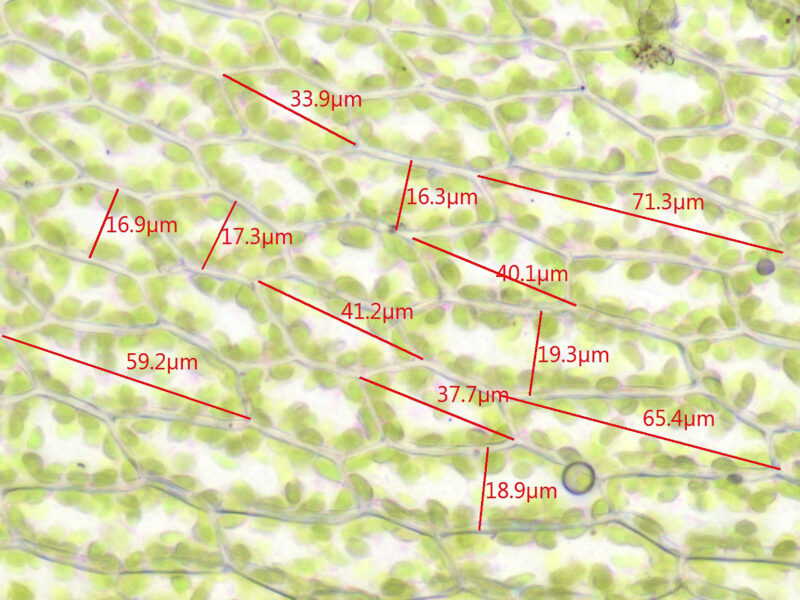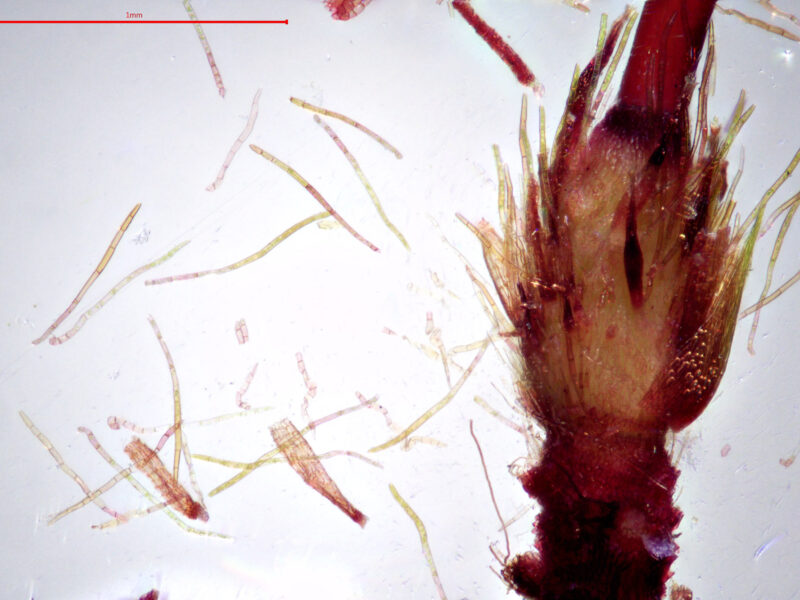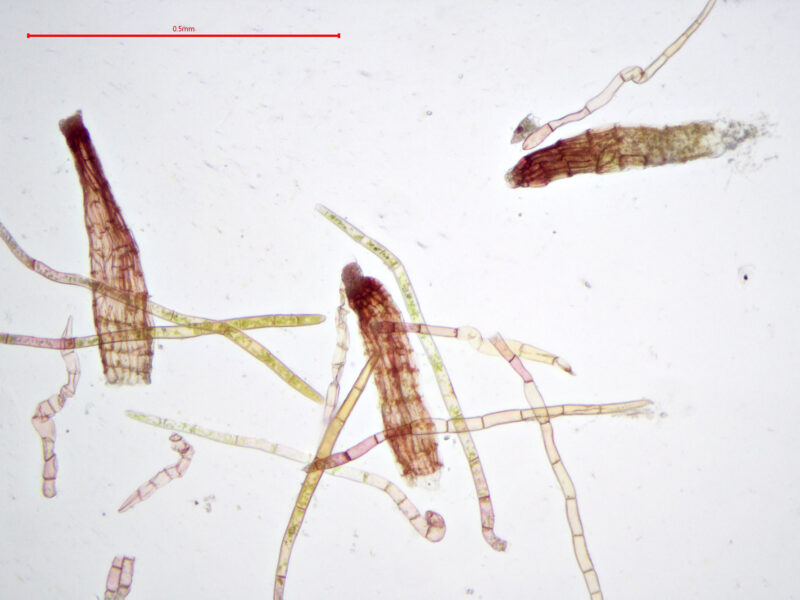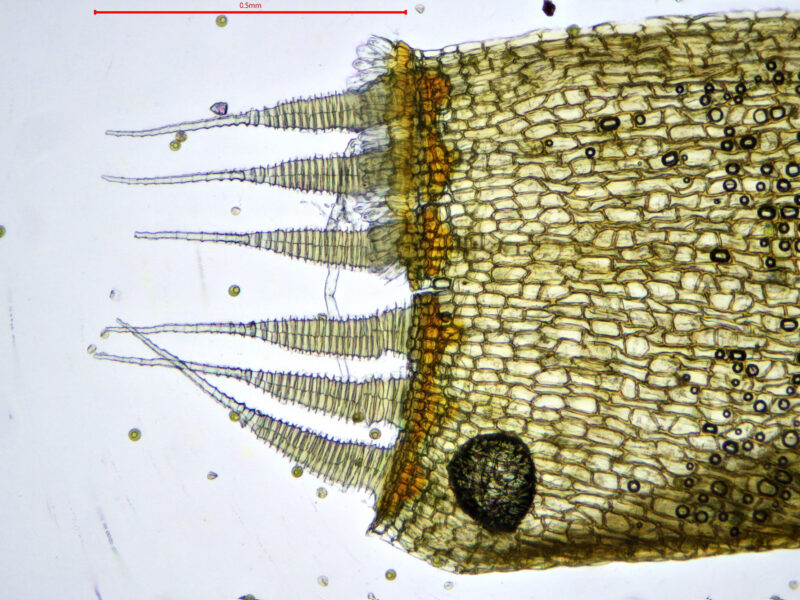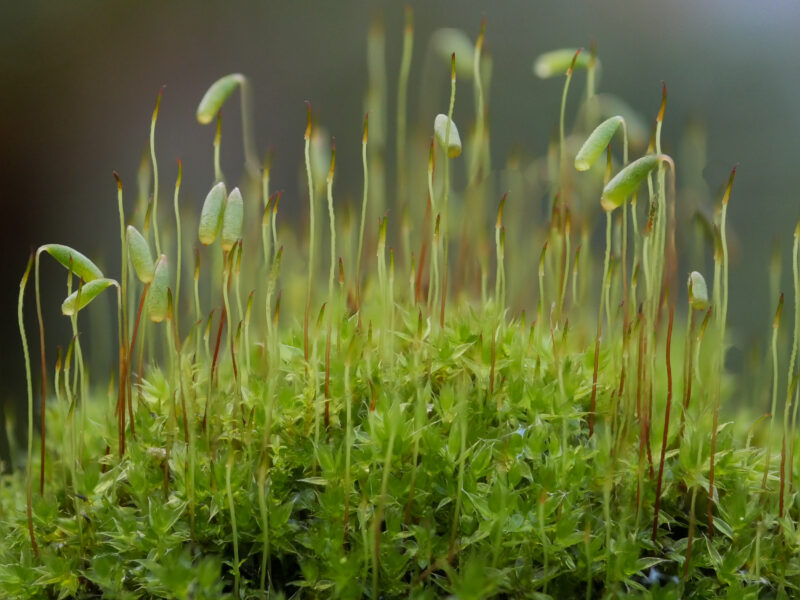Identification notes
Once the characteristic metal-rich habitat and appearance of this large Bryum is known, it’s not too difficult to identify. Small forms growing in atypical places can cause confusion, especially with the rare B. creberrimum.
As with the majority of capsule-bearing Bryum species, the process of reaching an identification is straightforward but is dependent on reproductive structures being present. Plants in ideal condition will have capsules that have dehisced relatively recently, with all peristome structures present. Often, lids can be teased off undehisced mature capsules with forceps, exposing the delicate peristome below. However, such capsules will be full of spores and these will need to be dispersed by gentle squeezing in air first.
To prepare a capsule mount to examine the peristome, first detach it from the seta and soak it gently in a drop of water on a slide on the stage of your stereomicroscope. Using a razor-blade, cut transversely across the capsule 1/5 – 1/4 of its length below the peristome mouth (discarding the lower part of the capsule) and then slice longitudinally through the resulting capsule ring. Manipulate the sections to lie flat on the slide, ideally showing both inner and outer capsule surfaces. You’ll find it easier to lay the capsule sections on dry glass rather than in water. When you’re happy with the result, gently lay a coverslip over the capsules, and whilst pushing the coverslip down gently to flatten the sections and exclude as much air as possible, use a dropper pipette to introduce water at the edge of the cover slip. Then transfer the slide to the compound microscope and examine the result.
With any luck, you’ll see outer peristome teeth, the more delicate and transparent endostome processes, the basal membrane and the thread-like cilia, which are appendiculate (see images below) in both B. pallescens and B. creberrimum. In the upper part of the processes, there is a series of large holes, or perforations – often longer than wide in B. pallescens, more or less isodiametric in B. creberrimum.
B. pallescens is synoicous (antheridia and archegonia together on the same plant, typically in one inflorescence around the base of the seta (if present) or autoicous (separate male and female inflorescences on the same plant). Search for inflorescences first at the top of the shoot. If a seta is present, by dissecting off the perichaetial leaves around it, it’s often possible to find unfertilised archegonia with antheridia (if synoicous) and hair-like paraphyses. These disappear as the capsule ages, so examination of young material is best.
Read the Field Guide account






